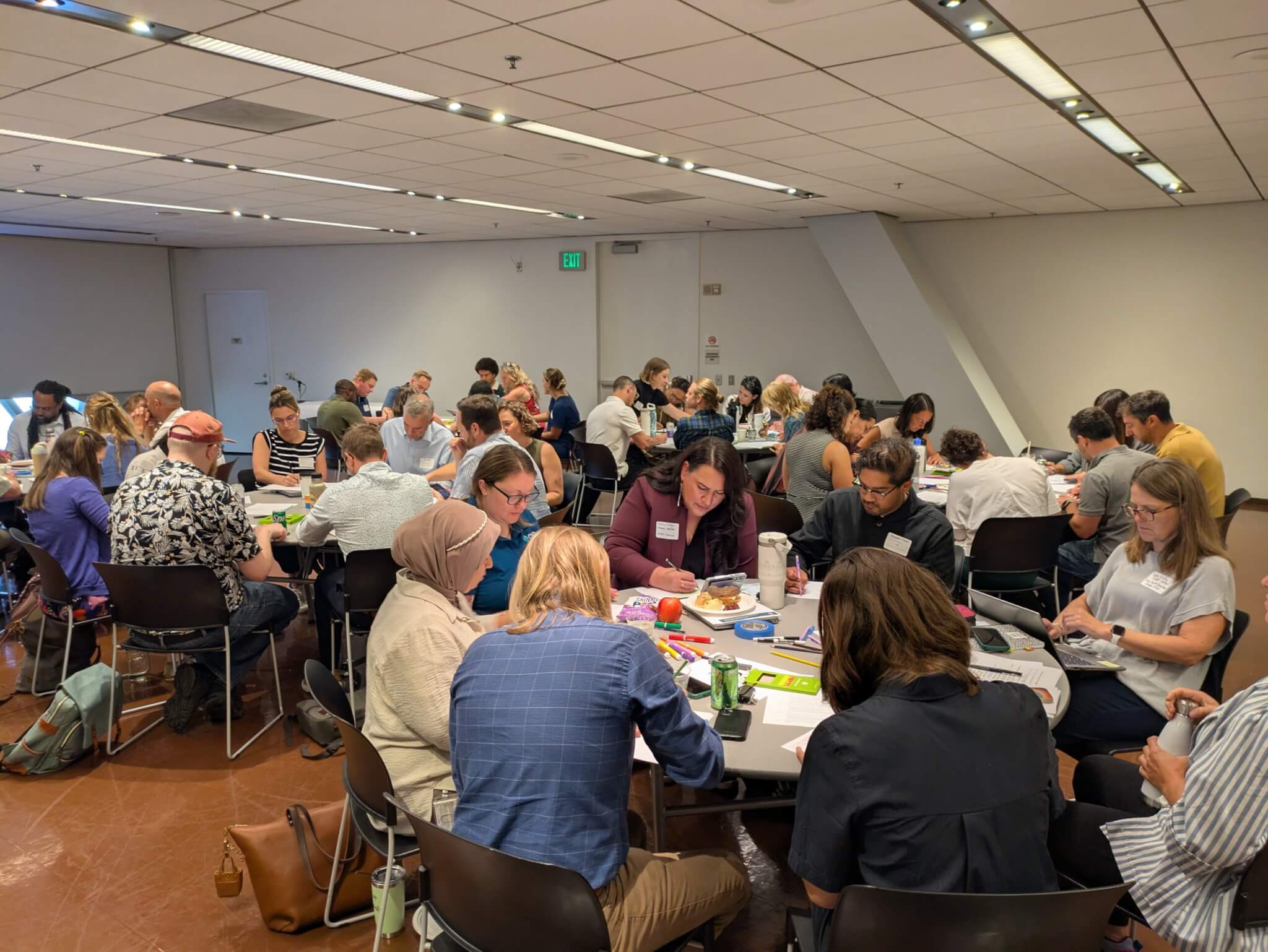Against this backdrop of escalating climate risk, C2ES recently traveled to Seattle, Washington to kick off the second regional Climate Resilient Communities Accelerator. The first in-person convening of the South-Central Puget Sound Accelerator focused on extreme heat and wildfire smoke impacts in the region. Both of these climate hazards are emerging threats to the region, and the week of the event, Seattle and Western Washington faced their hottest day of the summer thus far. These high temperatures served as a focusing point for the event and guided many of the discussions of the day. Around 70 participants, representing local and Tribal governments, private businesses, nonprofits, state agencies, academia, and community-based organizations, came together to work collaboratively to identify potential strategies to address these climate impacts that are increasingly affecting the region.
The event was a full-day convening with detailed sessions and speakers that laid the context for the region, the impacts, and informed the solution-oriented afternoon. The day began with the Washington State Climatologist presenting on the current and future projected extreme heat and wildfire smoke, after which participants were invited to share personal and organizational impacts from these hazards. In between collaborative and thoughtful discussions, participants heard from a range of speakers from local governments and nonprofits, many of whom called upon participants to think deeply about the impacts of this work on the communities around them and how we can protect the most vulnerable of us all as we advance work around climate resilience.

These valuable presentations and discussions culminated in a visioning exercise that allowed participants not only to envision what a climate-resilient region looks like, but also to take all the previous conversations and think through potential strategies to reach those visions. Participants then collaboratively developed and ideated strategies that can address these climate hazards and their associated impacts. Knowing that these two hazards impact every sector of the economy and communities of the region, there was a focus on developing cross-sectoral strategies to create multiple benefits for the region.
Some examples of key action areas and strategies proposed by participants include:
- Heat mapping across the region to identify areas most impacted by these hazards
- Creating a framework for best practices in funding for resilience work
- Developing passive cooling design guidelines for homes, recreational buildings, offices, and other spaces
- Investing in resilience hubs and cooling centers with extended or potentially overnight hours during peak heat periods
- Creating a workforce development program for HVAC technicians with specific training on combined AC smoke ventilation systems
These are just a handful of over 100 strategies that were identified in the event. This sample of strategies, if implemented, would have a range of potential co-benefits for the region, maximizing the limited resources available for resilience work.
No one sector can solve the climate crisis, and no one sector can build resilience alone. It will take collaborative processes with diverse sets of stakeholders and participants to produce the best possible outcomes for the people and communities we live, work, and serve in. As the resilience field evolves, stakeholder convenings like this one are increasingly vital for developing new and innovative ways to protect communities.
